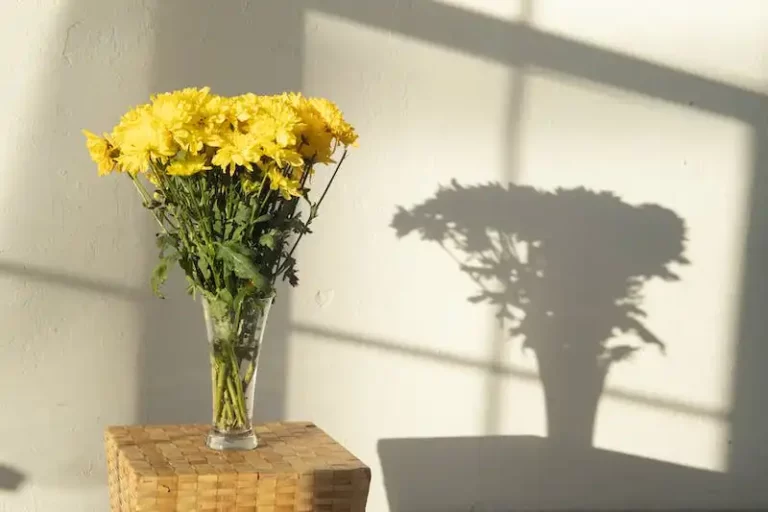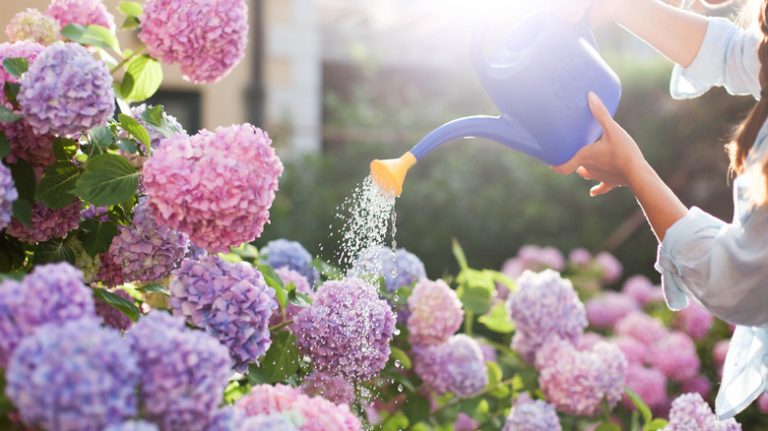Salvia, a genus of plants in the Lamiaceae family, is a popular choice among gardeners for their attractive foliage and vibrant flowers. With over 900 species to select from, there is a salvia for every gardener’s taste and growing conditions. Salvia is commonly referred to as sage and is often grown outdoors, but it can also be grown in containers.
One of the most popular species of salvia is Salvia officinalis, commonly known as common sage. This variety has full foliage and produces beautiful spikes of purple flowers. Many people love the smell and taste of sage, and it is often used as a culinary herb.
Salvias are known for their easy care and impressive growth. They are performers in the garden, attracting pollinators like bees and butterflies with their vibrant flowers and enticing scents. If you’ve never grown salvia before, here are some tips to help you get started:
Tip 1: Start by selecting the salvia species that best fits your growing conditions and tastes.
Tip 2: Salvia plants do well in full sun and well-draining soil. They also require regular watering, but be sure not to overwater as salvia does not like to be waterlogged.
Tip 3: Salvia plants can be grown from seeds indoors or outdoors. If starting indoors, use a good seed starting mix and lightly cover the seeds. Once the seedlings have developed a few leaves, they can be transplanted outdoors.
In addition to their aesthetic and culinary value, salvias have been used for their medicinal properties for centuries. Salvia divinorum, a species native to Mexico, contains the active compound salvinorin A, which is known for its altered states of consciousness. However, please note that the external use of salvia or the ingestion of salvia for its psychoactive effects is not advised and can be potentially harmful.
Whether you’re looking to add color and beauty to your garden or explore the herbal benefits of salvias, these plants are a great addition to any outdoor space. With their spires of flowers and attractive foliage, they are sure to catch the eye of passersby and provide a home for pollinators. So, why not give salvia a try and enjoy all the benefits this wonderful plant has to offer?
10 Popular Species of Salvia Plants
Salvia is an important genus in the Lamiaceae family, with over 900 species. Among the most popular species are:
- Salvia officinalis: Also known as common sage, it is grown for its culinary and medicinal uses. The gray-green leaves have a strong herbal fragrance.
- Salvia splendens: These are commonly known as scarlet sage or tropical sage. They’re grown for their vibrant flowers that form dense spikes.
- Salvia divinorum: This species is known as Diviner’s Sage and is infamous for its psychoactive properties. It is often grown for its hallucinogenic effects.
- Salvia nemorosa: These salvias have spires of flowers and are commonly used in landscaping due to their compact and long-lasting blooms.
- Salvia leucantha: Also known as Mexican bush sage, it produces purple and white flowers along its woody stems. It is a favorite among gardeners for its attractive foliage.
- Salvia greggii: These salvias are known for their colorful flowers and are often planted in containers or borders. They require full sun and well-drained soil.
- Salvia pratensis: Commonly known as meadow sage, this species is native to Europe. It has beautiful violet-blue flowers and attracts bees and butterflies.
- Salvia farinacea: These salvias are commonly grown as annuals and have spikes of blue or purple flowers. They are known for their tolerance to heat and drought.
- Salvia coccinea: Known as scarlet sage or tropical sage, these salvias have bright red flowers and attract hummingbirds. They are easy to grow and perform well in the garden.
- Salvia sclarea: Also known as clary sage, this species has tall flower spikes and is often grown for its essential oil, which is used in perfumes and as a flavoring agent.
If you’re starting your own salvia garden, it’s important to select the species that best suits your needs. Some salvias can be grown indoors while others are best planted outdoors. Consider the growth habit, care requirements, and potential medicinal or culinary uses of the species you choose. Keep in mind that some salvias may have altered physical or mental effects, so it’s important to do your research and use them responsibly.
Salvias are easy to grow and care for. They thrive in well-drained soil and require full sun or partial shade. Regular watering and occasional fertilizer application can help promote healthy growth. Whether you love their vibrant flowers, attractive foliage, or their herbal tastes, salvias are popular plants that many people enjoy having in their gardens or containers.
Submitted by: [Your Name]
Salvia Growing Tips
If you’re a gardening enthusiast or just starting out, salvia plants can be a great addition to your garden. These performers from the Lamiaceae family are known for their spikes of colorful flowers and attractive foliage. Whether you’re interested in their beautiful blooms or their herbal benefits, here are some tips for growing salvia plants:
Select the Right Species: Salvia plants come in various species, including annuals and woody perennials. It’s important to look for the species that suits your climate and growing conditions.
Planting and Care: Salvia plants can be planted indoors or outdoors, depending on your climate. If planting outdoors, choose a sunny location with well-drained soil. Salvia plants love full sun, but some species can tolerate partial shade. Make sure to water them regularly and provide proper care for good growth.
Select Good Soil and Fertilizer: Salvia plants prefer well-drained soil that is rich in organic matter. Adding compost or other organic fertilizers can help promote healthy growth. Avoid over-fertilizing, as it can lead to excessive foliage growth and fewer flowers.
Watch for Altered Effects: While salvias are popular for their beautiful flowers, it’s important to be aware of their effects. Some salvias, like Salvia divinorum, are known for their psychoactive properties when consumed. If you’re growing salvias for herbal purposes, make sure to educate yourself about the specific species and their effects.
Containers and Indoor Growing: If you don’t have a garden or live in a colder climate, you can still enjoy growing salvias in containers indoors. Just make sure to provide enough sunlight and proper care for these active plants.
Smells and Tastes: Salvias can have a wide range of smells and tastes. Some salvias have a strong aroma while others are more lightly scented. It’s important to know your personal preferences before selecting a variety to grow.
Keep an Eye Out: Salvia plants can attract various pests and diseases, so it’s important to regularly inspect them for any signs of damage. Taking proper care and addressing any issues promptly can help keep your salvias healthy and thriving.
Popular Varieties: There are many popular varieties of salvias available, both sold as plants and as seeds. Some common favorites include Salvia nemorosa, Salvia officinalis, and Salvia splendens. Refer to their specific descriptions for more information on their growth habits and requirements.
Whether you’re a seasoned gardener or just starting out, growing salvias can be a rewarding experience. With their vibrant colors, attractive foliage, and herbal benefits, these plants are sure to add beauty and interest to your garden.
Tip
A major tip for growing Salvia is to keep them in containers, especially if you live in a colder climate like Wisconsin-Madison. While Salvia can be grown outdoors, they are not cold hardy and may not survive the winter if planted directly in the ground. By keeping them in containers, you can easily move them indoors during the colder months to protect them from the frost.
Salvia plants are known for their spikes of colorful flowers and attractive foliage, which makes them a popular choice for gardeners looking to attract pollinators. These plants are easy to care for and can be grown from seeds or purchased as established plants from a reputable source. Regardless of how you acquire them, there are a few important tips to keep in mind.
Salvia is a member of the Lamiaceae family and is known for its herbal uses. Some species, like Salvia officinalis (commonly referred to as clary sage), have a strong aroma and taste that is popular in culinary and medicinal applications. While the external appearance of different Salvia species may vary, they all share similar growth habits and care requirements.
In order to select the best Salvia for your garden, it’s important to consider the specific growing conditions and desired outcomes. Some species of Salvia are annuals, while others are more woody and perennial. Annuals will need to be replanted each year, while perennials will come back year after year. The growth habits and care requirements may also vary between different species, so it’s important to do your research and refer to the specific plant description.
When planting Salvia, make sure to choose a location with full sun for optimal growth. These plants love the outdoors and need at least 6-8 hours of direct sunlight each day. They also prefer well-draining soil, so it’s a good idea to amend the soil with organic matter to improve drainage. Salvia plants are not heavy feeders and do not require a lot of fertilizer. A light application of a balanced fertilizer once or twice a year is usually sufficient.
In addition to their attractive foliage and vibrant flowers, Salvia plants are known for their physical and mental effects. Some people have reported altered states of consciousness after ingesting or inhaling Salvia, so it’s important to use caution and please refer to local laws and regulations before using this herb for any recreational or medicinal purposes.
Overall, Salvia is a popular choice for gardeners due to its attractive appearance and ease of care. By following these tips and taking proper care of your Salvia plants, you can enjoy their beauty and potential herbal benefits.



